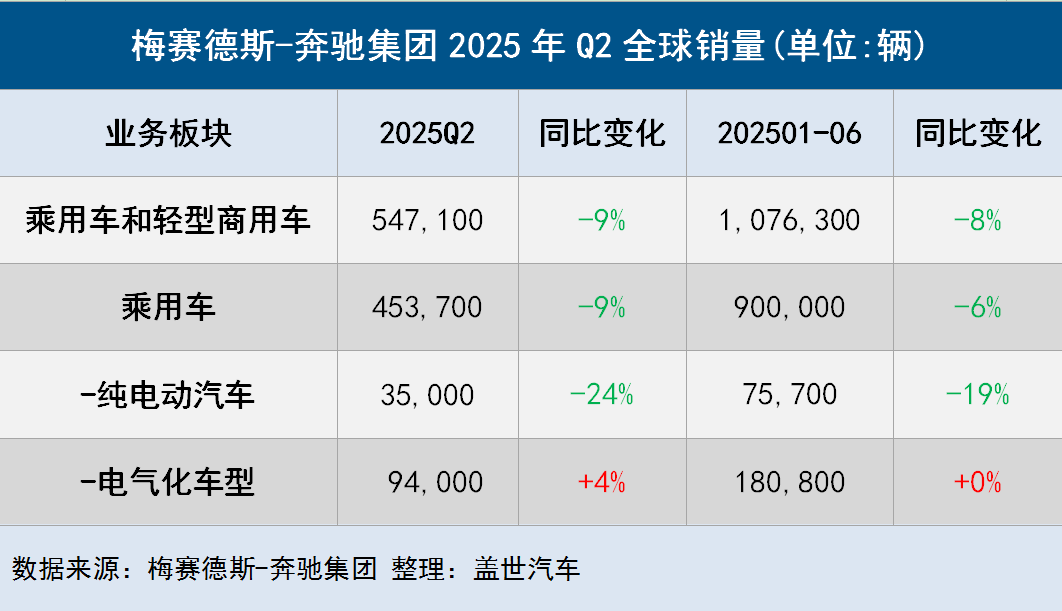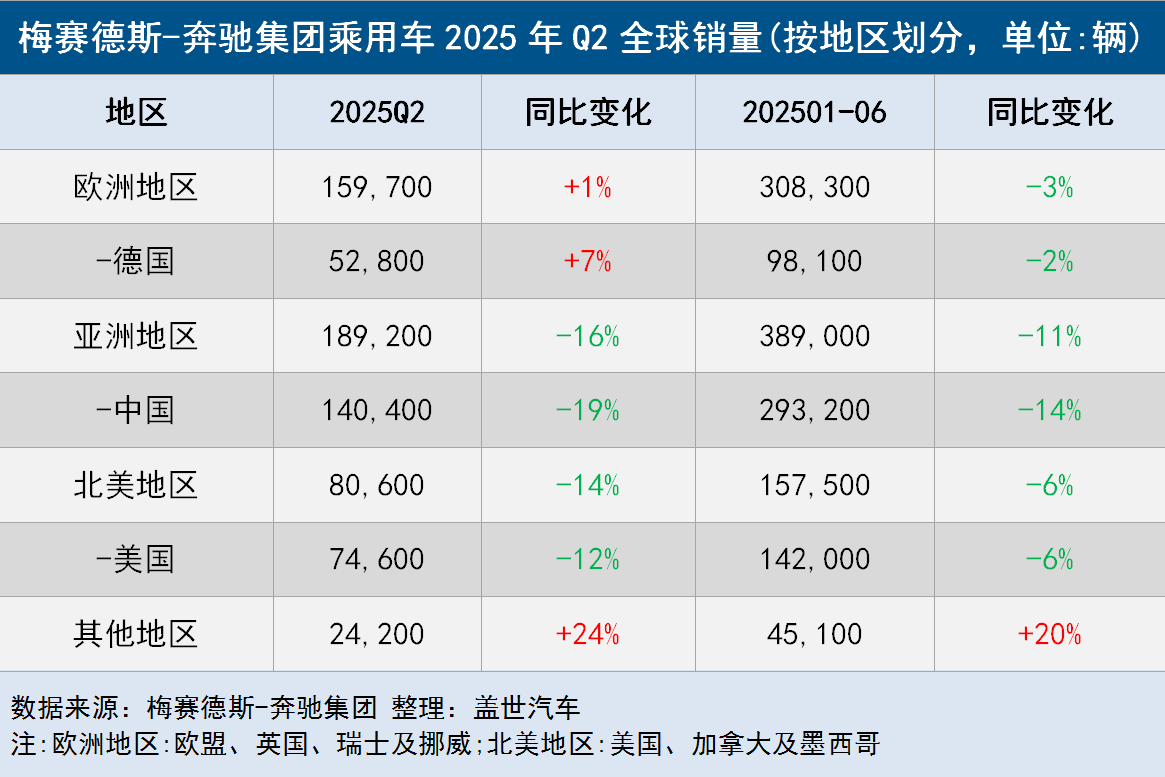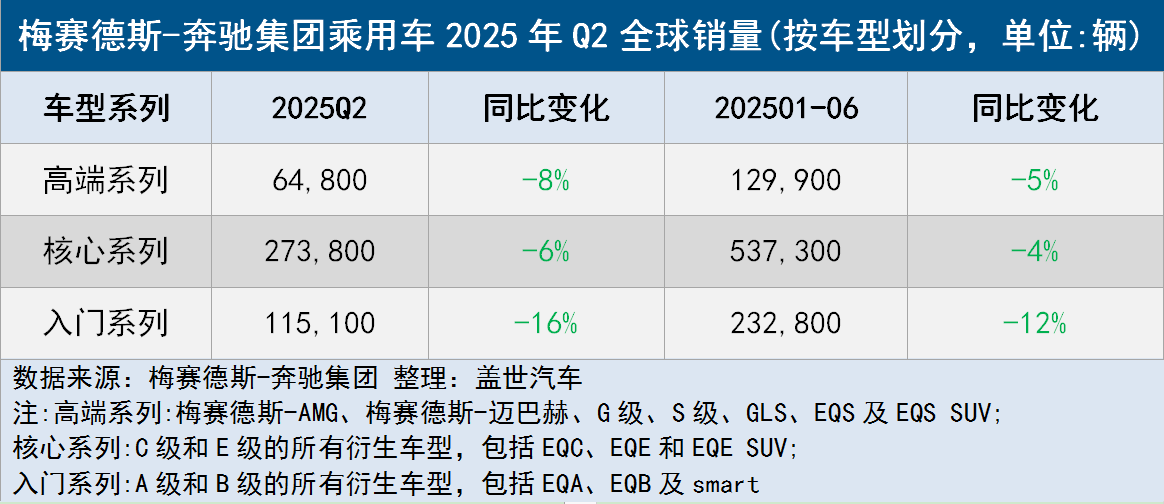On July 7, Mercedes-Benz Group announced that its global sales of passenger cars and light commercial vehicles in the second quarter of this year totaled 547,100 units, a 9% year-on-year decrease. Passenger car sales fell 9% to 453,700 units. The group's performance in the U.S. and Chinese markets was affected by trade tensions arising from tariffs implemented by the Trump administration, leading to high import duties on Mercedes models in these key markets. In Q2, sales of Mercedes-Benz electric vehicles decreased by 24% year-on-year to 35,000 units. However, the company indicated that orders for the new CLA sedan, built on a completely new electric platform designed to optimize range, are gradually increasing. Despite the decline in sales, Mercedes-Benz stock saw a slight uptick following the data release. Industry analyst Marc-René Tonn noted that this sales performance shows slight improvement compared to the first quarter and is slightly better than Mercedes-Benz's expectations. Nonetheless, the Q2 sales figures underscore the increasing impact of trade disputes on the brand, particularly regarding models produced in the U.S. and sold in China. The company produces large SUVs such as the GLS and GLE at its plant in Tuscaloosa, Alabama, and exports them to China. Following the increase in tariffs on Chinese goods in the U.S., the Chinese government retaliated with a 10% tax on vehicles including Mercedes-Benz SUVs manufactured in the U.S., further dampening market demand. By region, in Q2, Mercedes-Benz's passenger car sales in Europe totaled 159,700 units, a 1% year-on-year increase, with sales in Germany reaching 52,800 units, up 7% year-on-year. In Asia, sales dropped 16% to 189,200 units, with China seeing a significant 19% decline to 140,400 units. In North America, sales fell 14% to 80,600 units, with U.S. sales down 12% to 74,600 units. Other regions saw sales increase by 24% to 24,200 units, primarily driven by growth in Turkey and South America. The tariff policies have exacerbated the structural decline faced by Western automotive manufacturers in the Chinese market, where local brands like BYD have taken a dominant position in the electric vehicle segment. In this context, several of Mercedes-Benz’s electric models, including the flagship EQS, have encountered sluggish sales. In the high-end segment, Q2 sales of Mercedes-Benz premium models totaled 64,800 units, an 8% year-on-year decline, accounting for 14.3% of total brand sales. Demand for Mercedes-AMG models (up 19% year-on-year) and G-Class vehicles (up 56% year-on-year) remains strong. Particularly in the U.S. market, consumer demand for high-end models continues to surge, driving retail deliveries up by 15%. In its second-largest market, the U.S., Mercedes-Benz is solidifying its market position through increased investment; in the Chinese market during the first half of the year, Mercedes-Benz maintained its leading position in the high-end luxury car segment. The core model series of Mercedes-Benz saw global sales down 6% year-on-year to 273,800 units in Q2. In the entry-level market, the company experienced a 16% year-on-year decline in global car sales to 115,100 units.
Mercedes-Benz Reports 9% Drop in Global Sales for Q2 2023

Images


Share this post on: